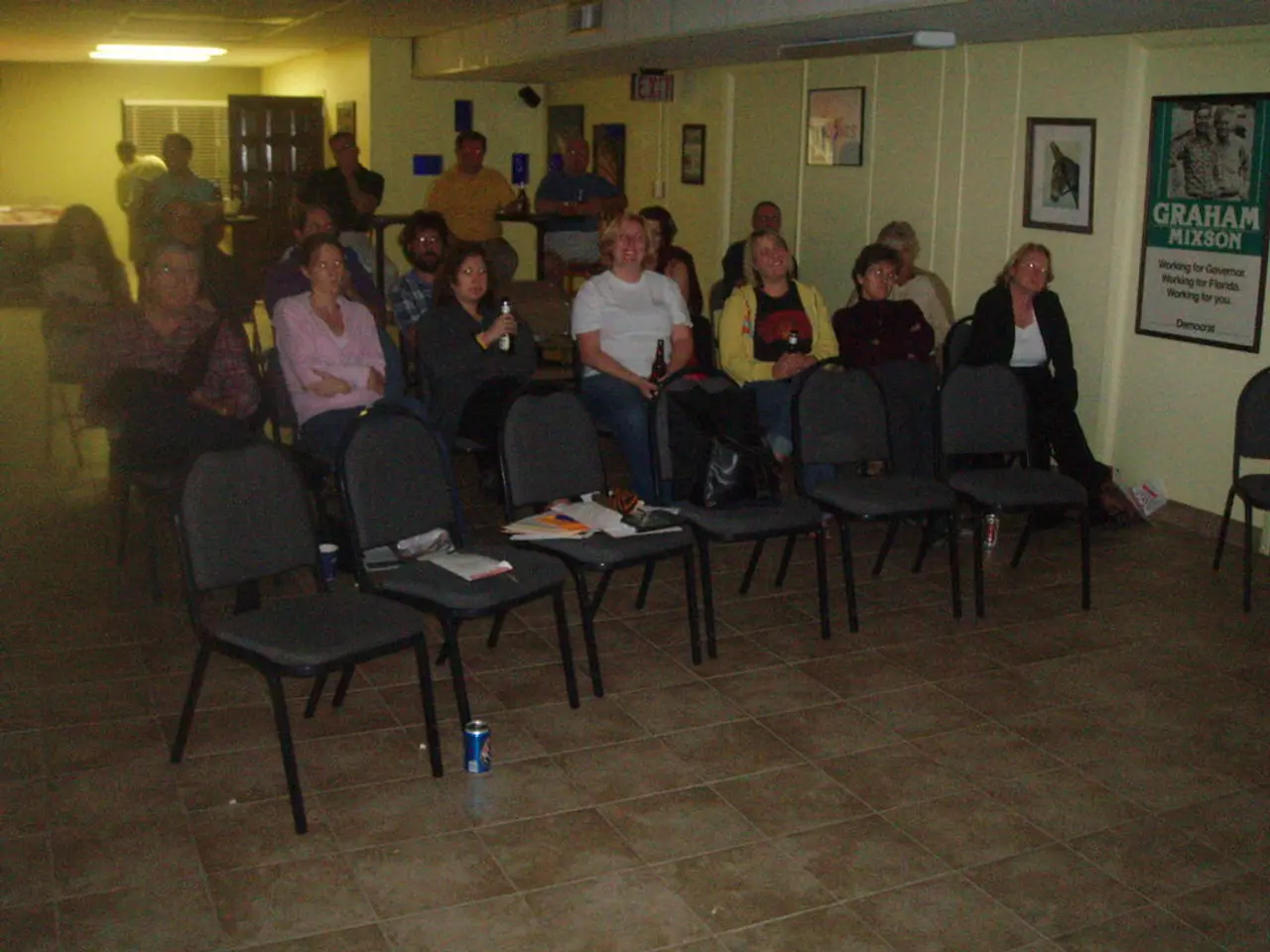Enhancing the entrance: Thoughts on diversity and inclusiveness in WordPress
In a thought-provoking talk titled "Over the Rainbow: Talking about Inclusivity for the LGBTQIA+ Community in WordPress," Kirsty Burgoyne shared their insights on how WordPress communities can foster a more inclusive environment. Burgoyne, who uses they/them pronouns, emphasized the importance of building spaces where people can bring their full selves.
Burgoyne, who identifies as someone who has navigated the edges of conversations, being a little queer, a little neurodivergent, and often feeling like a footnote in bigger conversations, asked if WordPress is as inclusive as it could be. They believe that inclusivity lives in soft systems, such as backstage decisions and editorial guidelines, and that it is present in the micro-decisions, mistakes, and public attempts to correct mistakes in the day-to-day life of the WordPress community.
The speaker did not have a grand call-to-action, but a question: "how can we keep making room?" They expressed a desire to contribute to the conversation about inclusivity in the WordPress community and invited the audience to keep talking, listening, and keeping the door open.
Burgoyne proposed that inclusivity can be thought of as a kind of emotional accessibility. To achieve this, they suggested that WordPress communities can improve inclusivity beyond policy or symbolic gestures by embedding inclusive practices into their daily workflows and soft system design.
Daily Practices for Inclusive WordPress Communities
- Accessible Content Practices: Encouraging contributors to write meaningful alt text for images, use proper heading structures for screen readers, avoid vague link text like "click here," and provide captions or transcripts for media. This makes published content more inclusive without requiring technical expertise from all participants.
- Accessible Theme and Design Selection: Choosing or customizing WordPress themes built with accessibility standards in mind, avoiding complex visual builders that may hinder accessibility, and ensuring high color contrast and non-color-dependent cues help users with visual or cognitive impairments navigate effectively.
- Inclusive Interaction Design: Making interactive elements such as links, buttons, and forms easy to identify and use without reliance on color or mouse hover states. Ensuring keyboard accessibility and mobile-friendly designs foster inclusivity in everyday user interactions.
- Fostering Trust Through Inclusion: Building real trust by designing websites and community tools that visibly prioritize accessibility sends a message that members and visitors are valued and cared for, enhancing engagement and supporting ongoing participation beyond compliance.
- Soft System Design Principles: Integrating accessibility into the culture and technology infrastructure so that inclusivity is an automatic, embedded feature rather than an add-on. This includes clear communication norms, inclusive moderation practices, and tooling that facilitates participation by people with diverse abilities and needs.
Together, these approaches shift inclusivity from abstract policies or symbolic activities to concrete, habitual practices that make WordPress communities genuinely welcoming and usable every day, thereby creating systemic, sustainable inclusion beyond formal rules or gestures.
Burgoyne believes that building tools that feel like an open hand, not a clenched fist, is key to creating a better WordPress. They suggested that we build a better WordPress by building a better welcome. The WordPress community has been a significant part of Burgoyne's life, providing a playground, a proving ground, and a patchwork of incredible humans. By embracing these daily practices, the WordPress community can continue to be a place where everyone feels welcome and valued.
- Burgoyne encourages WordPress communities to focus on fashion-and-beauty, emphasizing the need for accessible content practices, such as writing meaningful alt text and providing captions or transcripts for media, to make their content more inclusive.
- To foster a more welcoming environment, Burgoyne suggests that WordPress communities should consider personal-growth and education-and-self-development when it comes tosoft system design principles, ensuring clear communication norms, inclusive moderation practices, and tooling that encourages participation by people with diverse abilities and needs.
- In the spirit of promoting career-development, Burgoyne emphasizes the importance of inclusive interaction design, making interactive elements like links, buttons, and forms easy to use and accessible for all users, regardless of their visual or cognitive impairments.
- Embedding sports, such as football, and European leagues, into the WordPress community's daily practices can help create a more open and inviting atmosphere, where members feel encouraged to engage in meaningful discussions and collaborate on projects.
- To ensure an all-inclusive WordPress community, Burgoyne underlines the significance of supporting learning, lifelong personal-growth, and continuous career-development by adopting practices that cater to the needs of neurodivergent individuals and those who identify as LGBTQIA+.




